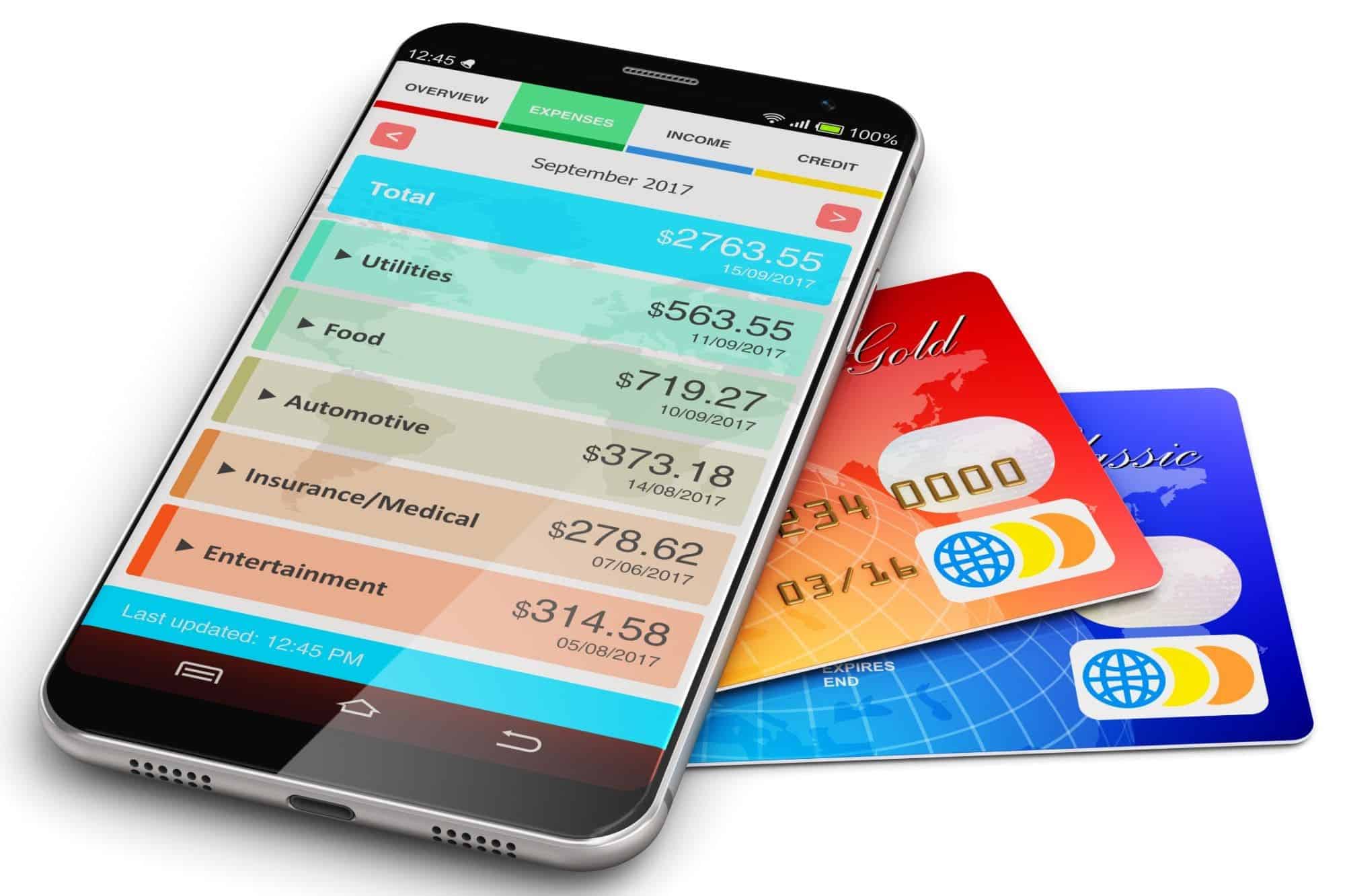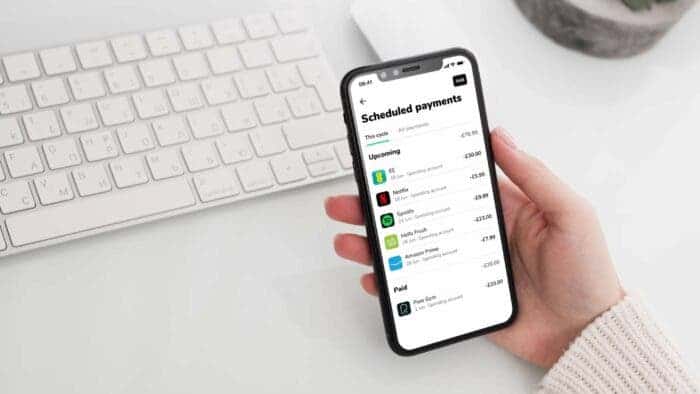In the age of digital revolution, where our lives unfold on glowing screens, it’s only fitting that our pocket-sized companion – the smartphone – has become a powerful tool for managing our most personal concerns, including our finances. Budgeting, once a tedious paper-and-pen affair, has blossomed into a dynamic landscape of apps, tools, and insights, all accessible with a few taps and swipes. But with so many options and information at our fingertips, navigating the world of mobile budgeting can be overwhelming. This comprehensive guide aims to empower you to harness the full potential of your smartphone, transforming it from a digital distraction into a financial ally.
Budgeting in Your Pocket: Mastering Your Finances with Your Smartphone
![]()
Step 1: Laying the Foundation – Understanding Your Income and Expenses
Before constructing your digital budget fortress, you need a solid foundation. Begin by gathering your income figures – salary, side hustles, freelance gigs, everything that contributes to your financial inflow. Next, embark on a spending exploration. Track every penny, whether it’s a latte purchase or a monthly rent payment. Manually enter transactions in a spreadsheet or utilize a budgeting app to automate the process. Categorize your expenses – groceries, transportation, entertainment – to gain a clear picture of where your money flows. This initial stage might take a few weeks, but it’s crucial for building a realistic and effective budget.
Step 2: App Arsenal – Choosing Your Digital Budget Champions
The app store is a battlefield of budgeting options, each vying for your attention. But don’t let the overwhelming choices paralyze you. Here are some popular categories to consider:
- All-in-One Powerhouses: Mint, YNAB, Personal Capital – These apps offer comprehensive budgeting features, including automatic transaction syncing, spending categorization, goal setting, and financial reports.
- Simplicity Reigns Supreme: PocketGuard, EveryDollar – For those who prefer a streamlined approach, these apps focus on basic budgeting functionalities like income tracking, expense categorization, and spending alerts.
- Debt Destroyers: Debt Snowball, Avalanche – Struggling with debt? These apps help you visualize and strategize debt repayment plans using methods like the snowball or avalanche approach.
- Savings Superchargers: Qapital, Acorns – These apps make saving effortless by automating small, recurring deposits based on your spending or rounding up transactions.
Your ideal app will depend on your individual needs and financial goals. Research, download demo versions, and choose the one that resonates with your budgeting style.
Step 3: Building Your Budget – From Pixels to Plans
With your income and expenses mapped out and your app of choice ready, it’s time to build your budget. Here’s a framework to guide you:
- Analyze your spending: Review your tracked expenses and identify areas where you can cut back. Focus on non-essential spending like impulse purchases or excessive subscriptions.
- Prioritize your needs: Allocate funds for essential expenses like rent, utilities, groceries, and transportation.
- Set realistic goals: Don’t aim for drastic overnight changes. Start with small, achievable goals, like reducing eating out by one day a week or lowering your entertainment budget by 10%.
- Create spending categories: Divide your remaining income into categories like dining, entertainment, clothing, and savings. Assign realistic spending limits to each category based on your needs and priorities.
- Embrace flexibility: Budgets aren’t rigid blueprints. Life throws curveballs, so adjust your spending limits as needed while sticking to your overall financial goals.
Step 4: Tracking and Adapting – Budget Optimization in Real-Time
Your budget isn’t a static document; it’s a living roadmap for your finances. Regularly review your spending on the app, looking for areas to optimize. Adjust categories, spending limits, and goals as needed. Don’t be afraid to experiment and find what works best for you.
Many budgeting apps offer helpful features like spending insights, progress reports, and goal trackers. Utilize these tools to stay motivated and on track. Remember, budgeting is a process, not a destination. Adapting and tweaking along the way is key to sustainable financial success.
Step 5: Beyond the App – Additional Strategies for Financial Fitness
While budgeting apps are powerful tools, they’re not a magic bullet. Implement additional strategies to complement your digital budgeting plan:
- Meal planning and cooking at home: Reduce dining out expenses by planning and preparing healthy meals at home.
- Utilize coupons and discounts: Take advantage of deals and promo codes to save on groceries, entertainment, and other expenses.
- Unsubscribe from unused subscriptions: Audit your recurring subscriptions and unsubscribe from those you no longer use.
- Negotiate bills: Don’t be afraid to negotiate lower rates on your cable, internet, or phone bills.
- Build an emergency fund: Aim to save at least 3-6 months of living expenses to cover unexpected costs like car repairs or medical bills.
- Boost your income: Consider side hustles, freelance gigs, or online work to increase your income stream and accelerate your financial goals.
- Invest for the future: Once you have your budget under control, consider investing a portion of your income for long-term goals like retirement or future purchases.
- Seek financial education: Read books, listen to podcasts, and attend workshops to improve your financial knowledge and confidence.
- Find a financial support system: Surround yourself with friends and family who are supportive of your financial goals and can offer encouragement and accountability.
Step 6: Mastering the Mindset – Cultivating a Healthy Relationship with Money
While budgeting tools and strategies play a crucial role, the real key to financial success lies in cultivating a healthy relationship with money. Here are some tips to shift your mindset:
- Focus on abundance, not scarcity: View your budget as a tool to empower yourself, not restrict you. Celebrate your progress and achievements, no matter how small.
- Embrace delayed gratification: Learn to prioritize long-term goals over immediate gratification. Saving for a dream vacation or a future down payment will bring you more lasting satisfaction than impulsive purchases.
- Challenge negative money beliefs: Identify and replace limiting beliefs like “I’m not good with money” or “I’ll never be wealthy.” Instead, focus on positive affirmations like “I am capable of managing my finances” and “I am building a secure financial future.”
- Practice gratitude: Expressing gratitude for the resources you have can shift your focus from what you lack to what you possess. This shift in perspective can foster motivation and a positive outlook on your financial journey.
Remember, budgeting is a journey, not a destination. Don’t get discouraged by setbacks or temporary detours. Stay focused on your goals, embrace adaptability, and celebrate your progress. With dedication and the right tools, your smartphone can become a powerful ally in your quest for financial mastery.
Bonus Tips:
- Utilize the “pay yourself first” approach: Treat your savings goal like a fixed expense and transfer a portion of your income to your savings account automatically at the beginning of each pay period.
- Set up automatic bill payments: Automate your essential bill payments to avoid late fees and ensure financial stability.
- Challenge yourself with financial goals: Set achievable but challenging goals, like saving for a down payment on a house or saving a specific amount within a certain timeframe. Achieving these goals will boost your confidence and motivation.
- Don’t be afraid to seek professional help: If you’re struggling to manage your finances on your own, consider consulting a financial advisor for personalized guidance and support.
So, with these tips and strategies, you can transform your smartphone into a powerful financial tool, one tap at a time. Remember, the key to success lies in finding a system that works for you, remaining adaptable, and most importantly, taking control of your financial future.
More on Budgeting with Your Smartphone: Advanced Strategies and Personalization

While the core principles of budgeting apply universally, the specifics can vary depending on your individual needs and goals. Here are some additional resources and strategies to tailor your mobile budgeting experience:
Personalization Strategies:
- Track specific financial goals: Instead of simply monitoring overall spending, use goal-tracking features within your app to monitor progress towards specific objectives like a vacation fund, emergency fund, or debt repayment target. Seeing the visualization of progress can significantly increase motivation.
- Utilize location-based budgeting: Certain apps offer location-based features that suggest nearby budget-friendly options for dining, entertainment, or shopping. This can help you make informed decisions and stick to your spending limits even when on the go.
- Connect with your social circle: Some budgeting apps allow you to connect with friends or family who are also using the app. This can provide a supportive network for sharing tips, challenges, and celebrating achievements, adding a social element to your financial journey.
- Embrace gamification: Gamification features like reward points or badges can add a fun element to budgeting, making it feel less like a chore and more like a rewarding game. Choose an app that offers gamification features that resonate with your personal preferences.
Advanced Budgeting Techniques:
- Zero-based budgeting: This approach assigns every dollar of your income to a specific spending category or savings goal, leaving no funds unaccounted for. This method can be ideal for those seeking a strict and detailed approach to budgeting.
- Envelope budgeting: This physical method uses envelopes for each spending category, ensuring you stay within your allocated budget. While seemingly old-fashioned, this method can be helpful for individuals who prefer a tactile approach to managing their finances.
- Automate savings and investments: Many budgeting apps allow you to automate recurring transfers to savings accounts or investment platforms. This helps build financial discipline and consistency, ensuring you don’t rely solely on willpower to reach your savings goals.
- Track net worth: Some advanced budgeting apps allow you to track your net worth, which is the sum of your assets minus your liabilities. This provides a holistic view of your financial health and can be a powerful motivator to build wealth over time.
Remember:
- Budgeting is a continuous process: It’s crucial to regularly review your progress, adjust your budget as needed, and adapt to changing circumstances. Don’t be afraid to experiment and find what works best for you.
- Celebrate your success: Take time to acknowledge and celebrate your achievements, no matter how small. This will keep you motivated and on track towards your financial goals.
- Seek help if needed: Don’t hesitate to seek professional financial advice if you’re struggling to manage your finances on your own. A financial advisor can provide personalized guidance and support to help you navigate your financial journey.
So, with the right tools, strategies, and mindset, your smartphone can be a powerful asset in your quest for financial well-being. Embrace the possibilities, personalize your approach, and remember, a successful budget is one that you can stick to and use to achieve your financial dreams.

